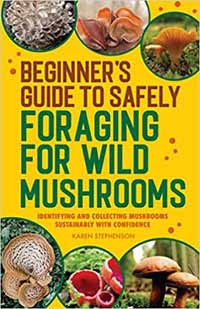

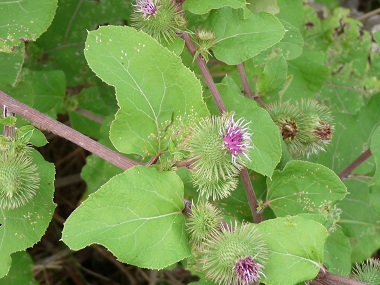
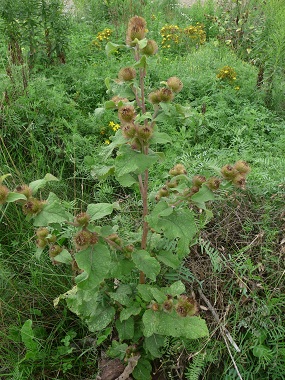
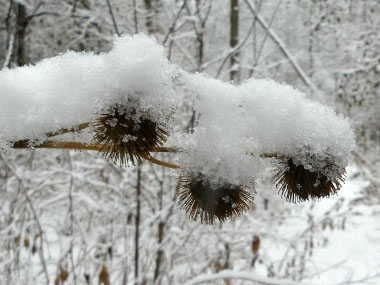
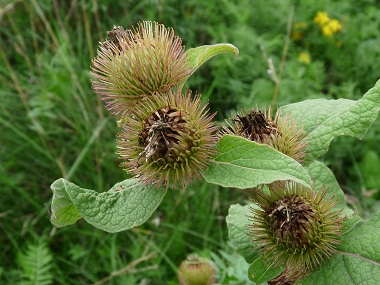
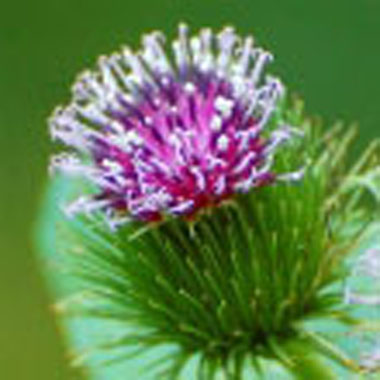
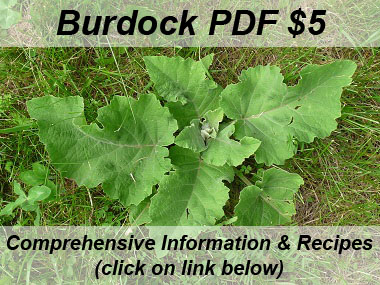
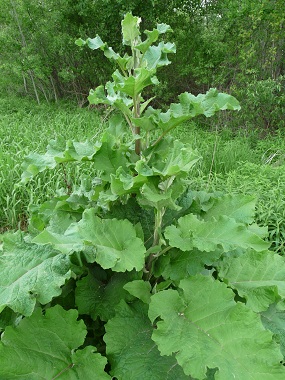
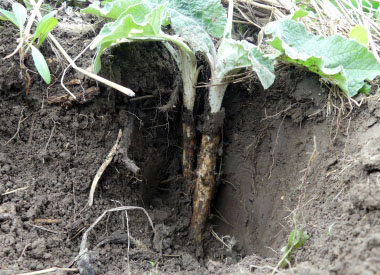
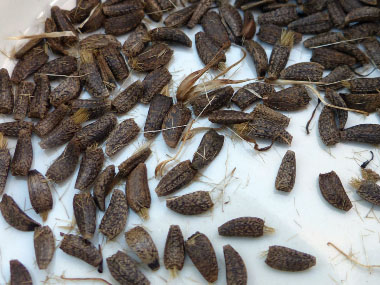
For comprehensive information (e.g. nutrition, health benefits, recipes, history, harvesting tips, etc.) please check out our Burdock PDF magazine.
Recognized mainly for its burrs, burdock is an interesting biennial plant. This plant is known as a nuisance weed in many areas across the U.S. and Canada, yet it is a valuable crop in Japan. In Japan, it is called gobo. Burdock root consists primarily of carbohydrates, volatile oils, plant sterols, tannins, and fatty oils. In its first year of growth this plant has no stem and grows only as a basal rosette of leaves. At the beginning of the second year the stem grows and it continues its life cycle. The burrs are credited with inspiring Swiss inventor George de Mestral to invent Velcro in the 1940’s.
Distinguishing Features
Burdock is a common weed with annoying burrs that stick to animal fur and clothing. This plant grows relatively tall therefore having deep roots. The basal rosette of leaves grow close to the ground the first year and they resemble rhubarb. Arctium lappa and Arctium minor look almost identical except Arctium minor flowers and seedpods have much shorter petioles and appear "bunched" together.
Flowers
Burdock has purple disc florets emerging from bristly bracts that bloom between June and October. Flower heads measure 1 to 3 cm (.39 to 1.2”) across.
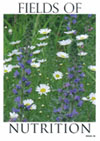 Fields
of Nutrition has medicinal benefits and vitamin/mineral content of Burdock.
Fields
of Nutrition has medicinal benefits and vitamin/mineral content of Burdock.
Leaves
Large, wavy, cordate (heart-shaped) leaves are dark green on top, lighter and slightly downy underneath. As biennials, first year growth is a basal rosette of leaves. In the second year as the plant develops a stem, leaves on the upper stem are triangular. They also get smaller as they go up the stem. Basal leaves can reach lengths of 1 to 1.25 metres (3 to 4’).
Height
This plant grows to a height of about 1 – 2 metres (3 - 6’) tall.
Habitat
Burdock thrives along riverbanks, disturbed habitats, roadsides, vacant lots, and fields. It grows throughout North America, South America, Australia and N.Z. Burdock is native to Europe and Asia.
Edible Parts
First-year roots are used in a variety of ways. Stems can be cooked by boiling for about 20 minutes, but they will need seasoning. Before cooking, the stems should be peeled. The Japanese have been known to eat the leaves when it is young and leaves are soft, but they are quite bitter. Seeds are edible in small quantities.
Other Name
Common Burdock.
Similar Plants
Recipes
Burdock Brown Rice and Mushrooms, Burdock Jelly, Burdock Root and Miso Soup, Burdock Root Soup, Burdock Shitake Rice, Wild Tonic Tea, Burdock Tuna Salad, Candied Burdock Root, Fermented Burdock and Zucchini Relish , Montreal Smoked Meat Wraps, Spicy Fried Burdock and Celery, Super Stacked Sauerkraut
To support our efforts please browse our store (books with health benefits, etc.).
Winter Survival Food Handbook

PDF Plant Magazines
Types of Wild Food
Geographic Zones Seasons
Disclaimer
EdibleWildFood.com is informational in nature. While we strive to be 100% accurate, it is solely up to the reader to ensure proper plant identification. Some wild plants are poisonous or can have serious adverse health effects.
We are not health professionals, medical doctors, nor are we nutritionists. It is up to the reader to verify nutritional information and health benefits with qualified professionals for all edible plants listed in this web site. Please click here for more information.
Why Edible Wild Food?
- Food costs are rising
- Free, wild food is readily abundant
- Wild food adds nutrition to your diet
- Wild food can help treat various medical conditions





